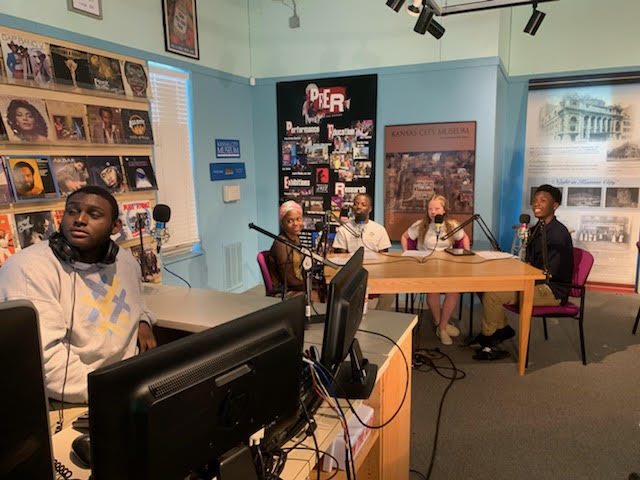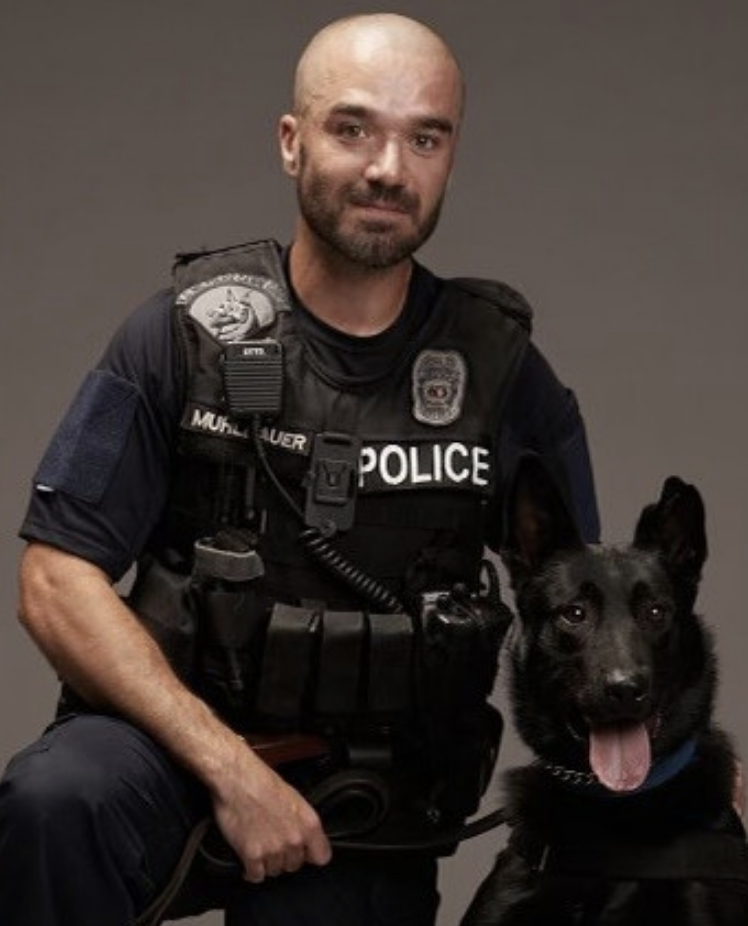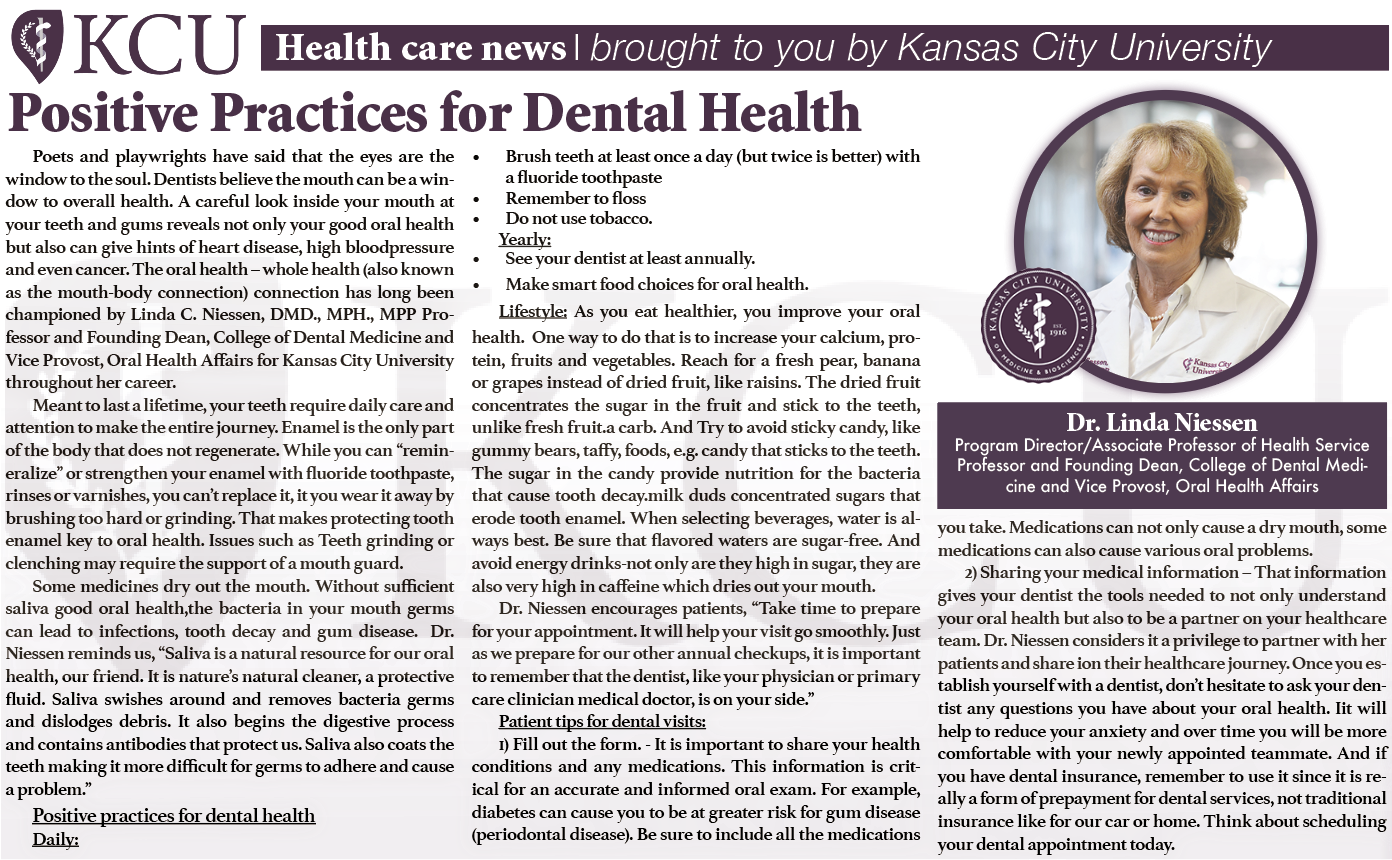Donald Davis, Mackenzie Harris, D’Ontay Love, Julia Bond and Derrick Brown record “The BloKC is Hott” in the One Kansas City Radio studio at the Kansas City Museum
Layne Stracener
Editorial Assistant
The Kansas City Museum and One Kansas City Radio recently began a youth-driven radio pilot program, “The BloKC is Hott.”
Crossroads Preparatory Academy Innovation Coach Jamie Greason, who connects students to projects in the community, said this program is a great way to amplify the voices of young people in conversations about topics that are important to them.
“Young people are powerful, and their opinions matter,” Greason said. “This can be a unifying platform for our city’s young people, and it engages them in discourse that they wouldn’t otherwise be a part of. Young people care about really important things, and they just need to be given that opportunity to talk about them.”
Five Crossroads Preparatory Academy High School sophomores are currently involved in the program as part of a class called “career academy” in which students choose from different projects in the community to work on.
This program is part of a Historical Urban Base project, a Kansas City Museum initiative that collaborates with local organizations and individuals to offer a collection of diverse stories of Kansas Citians through a variety of media.
Kansas City Museum Executive Director Anna Marie Tutera said she created this program because she saw a need for a youth radio program in the community. This program is important to the Kansas City Museum, she said, because their primary target audience is children, youth and families.
“As an institution that values connecting people and resources and creating content that brings people together through conversation, it’s really important that the perspectives and experiences of youth are represented in the museum,” Tutera said. “I think this is a really good way to achieve that.”
After those involved determine a program schedule, they plan to do live broadcasts and involve other local high schools so students from different schools can work with each other, said Tutera.
D’Ontay Love, one of the students involved, said the students are working to design the ideal model for the program.
“We know that it needs to be perfect so that whoever decides to come in after us has an example to follow,” Love said.
The mission statement of this program is to “inspire, inform and ignite the youth through history, music, culture and art.”
The vision is to “provide the youth with engaging and inclusive material that allows them to think critically and optimistically.”
The other students involved in the program are Derrick Brown, Julia Bond, Mackenzie Harris and Donald Davis. Davis, the sound engineer, records and edits the audio with the equipment at the radio station. The other students are co-hosts.
The students work in the One Kansas City Radio studio in the Kansas City Museum. They create the scripts and choose the topics, music and guests. They also named the show and created the mission and vision statement of the program.
There will be four segments in each hour-to-45 minute show: news and sports, health and wellness, team influence, and local arts and culture. There will also be debates and guest appearances.
The students plan to record three or four shows this summer, but there is not yet a confirmed date for when the shows will air.
Love said the students speak about what they believe is important to the community and what the community wants to hear, because their goal is for people to listen to the show. He said there is a misconception that young people aren’t informed and don’t pay attention to current events. The reason, he said, is because there is not a platform specifically for young people’s voices.
“Most of us do pay attention,” Love said. “We think about important things and we know what’s going on around us. But oftentimes, people leave us out of the conversation.”
This program, he said, gives young people a platform for their voice, which helps defy these stereotypes and normalize young people as part of the conversation.
Greason said she is grateful for this program, because young people’s voices need to be heard.
“Our city needs youthful energy to bring us together,” Greason said. “We need to connect every demographic through shared understandings and experiences, and I think that this radio program can help be that connection.”



















